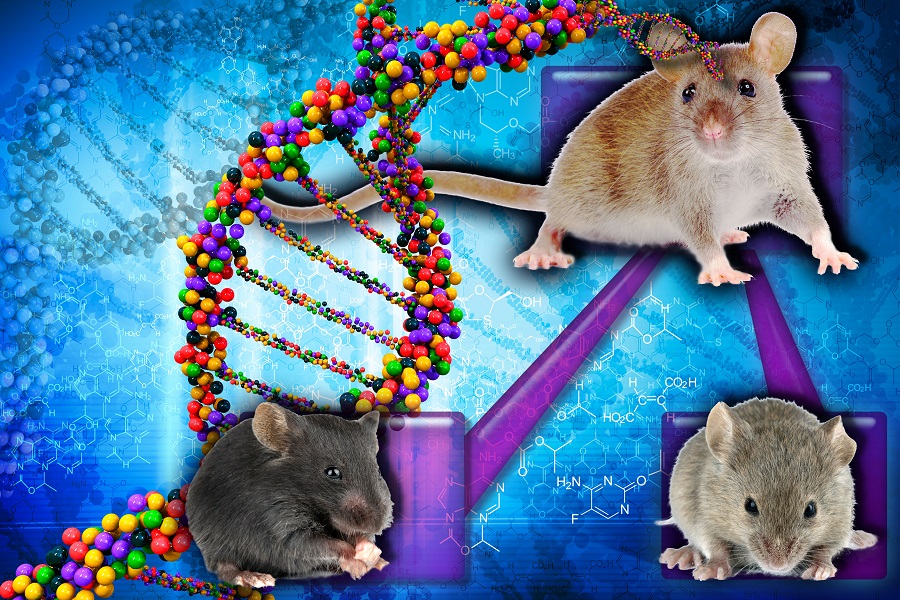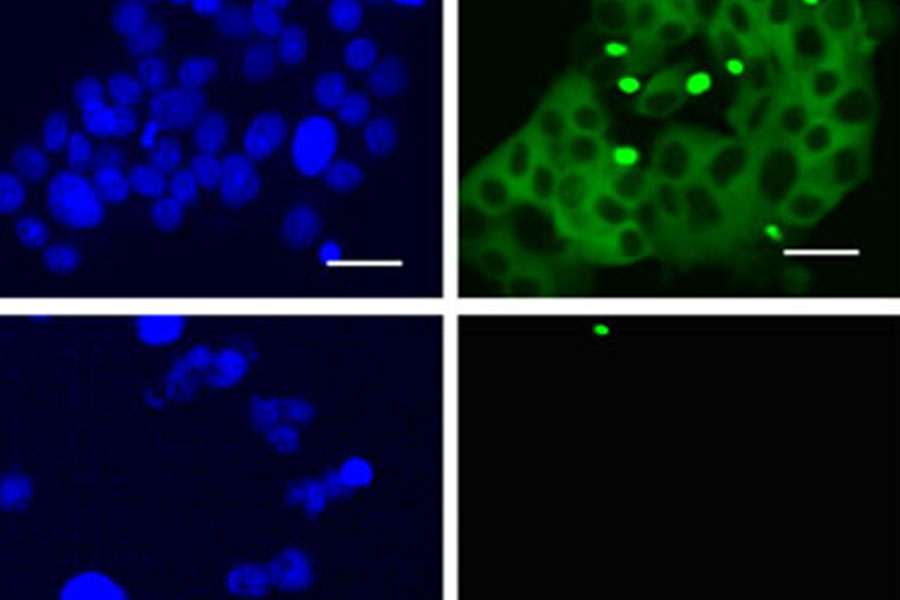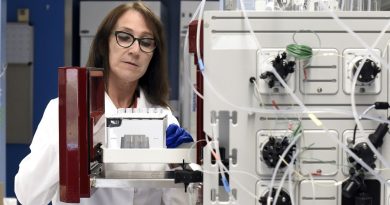Mutations in CWC27 result in spectrum of conditions
Mingchu Xu searches for genes linked to retinitis pigmentosa, a condition of the retina characterized by progressive development of night blindness and tunnel vision, sometimes from the early age of 2. Retinitis pigmentosa is the most common inherited disorder of the retina; it affects nearly 1 in 4,000 people, and more than 1 million are visually impaired around the world due to this untreatable disease.

“This project began more than two years ago when we identified a patient with retinitis pigmentosa carrying a frameshift mutation in the CWC27 gene,” said Xu, a graduate student in molecular and human genetics in Dr. Rui Chen’s lab. “The patient did not have other conditions in addition to the vision problems. To study the condition, we mimicked the human mutation in a mouse model, and at 6 months of age the mice showed retinal degeneration and no other conditions, just as we had observed in the human patient.”

The researchers were excited. “We had discovered a new gene associated with this disease,” said Chen, associate professor of molecular and human genetics at Baylor.

CWC27 is one of more than 100 genes that participate in the formation and function of the spliceosome, a molecular machine that is involved in the correct expression of the proteins that carry out the functions of all the cells in the body. Until now, most disease-associated genes of the spliceosome had been involved in two non-overlapping conditions. On one hand, mutations in certain proteins of the spliceosome cause syndromes that involve mainly craniofacial and skeletal conditions, while, on the other hand, mutations in other spliceosome genes result only in retinitis pigmentosa. CWC27 seemed to belong to the second group of genes.
Surprising results
“Our collaborator Dr. Daniel Schorderet, director of the Institute for Research in Ophthalmology in Switzerland, was working with patients who present with both vision problems and more severe clinical conditions such as craniofacial and skeletal problems,” Xu said.
“We expected that the spectrum of craniofacial, skeletal and vision problems observed in Dr. Schorderet’s patients would be linked to genes that are different from CWC27. Only when we looked at the genes did we realize that the spectrum of clinical characteristic in the patients was the result of various mutations in this same gene,” Chen said.
By applying exome sequencing to multiple families and modeling the disease in two mouse models the researchers were able to appreciate the spectrum of clinical conditions that mutations in the same gene can cause.
“This is the first time a mutation of a gene in the spliceosome has been described to result in an entire spectrum of clinical conditions,” Xu said. “To explain why our patient presented only with vision problems, we hypothesized that the mutation in our patient’s CWC27 was milder than those of other patients. By analyzing the results on mouse models and patient samples, we found that the mutant gene in our patient probably retains a residual function, while the genes in the patients of the other groups have a more severe loss of function.”
“This study also shows the power of collaboration within the genetics community when looking for new disease-associated genes,” Xu said. “Initially, we only identified one patient and then we collected more cases via two platforms, GeneMatcher and the European Retinal Disease Consortium. We would not have been able to present this interesting story without the contributions of researchers from nine countries. With exome sequencing accessible to more patients and researchers, these platforms will most likely speed up the process of finding the genetic causes of human diseases.”
Read the details of this study in the American Journal of Human Genetics.
Click on the links for a complete list of authors and their affiliations and the financial support for this project.



